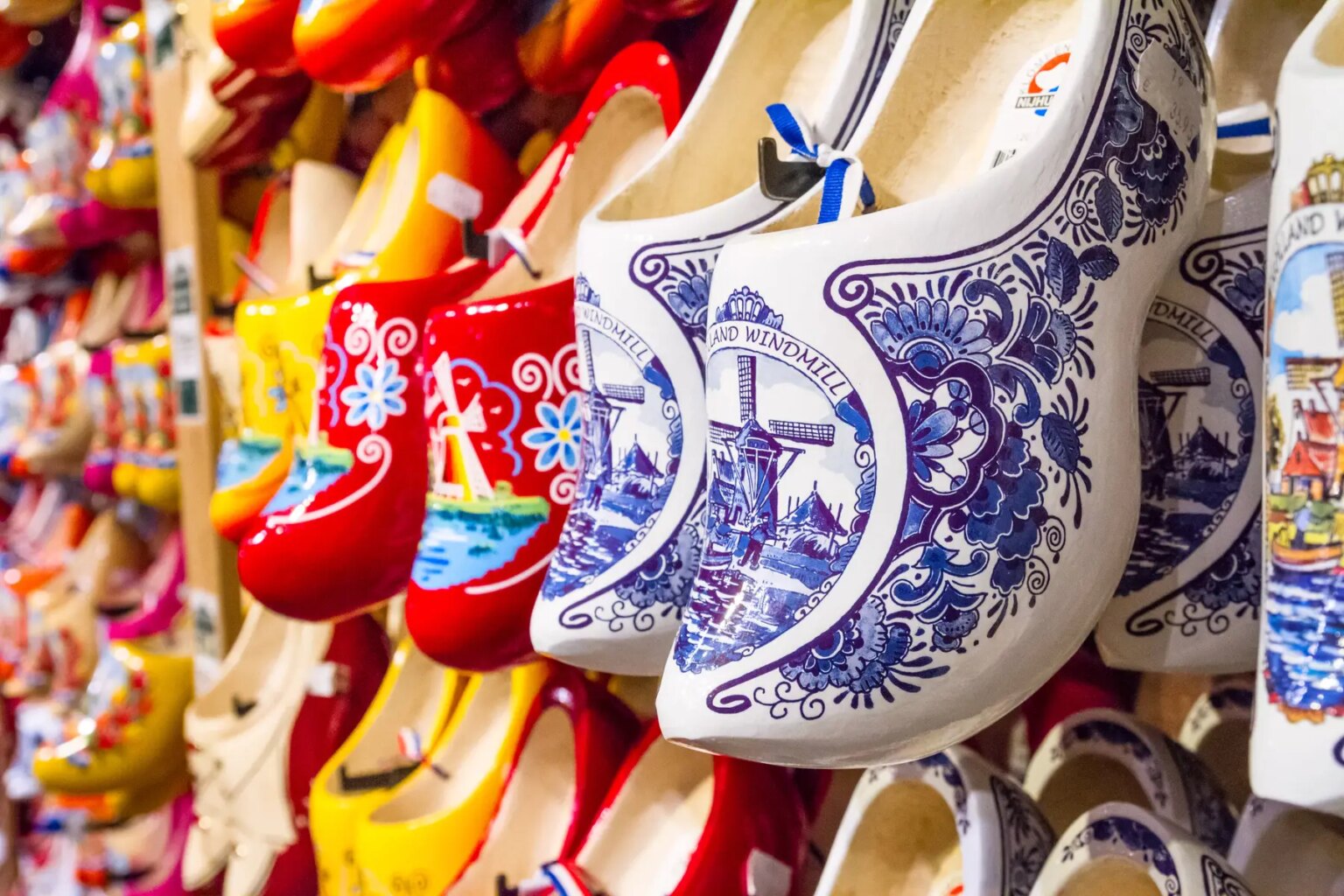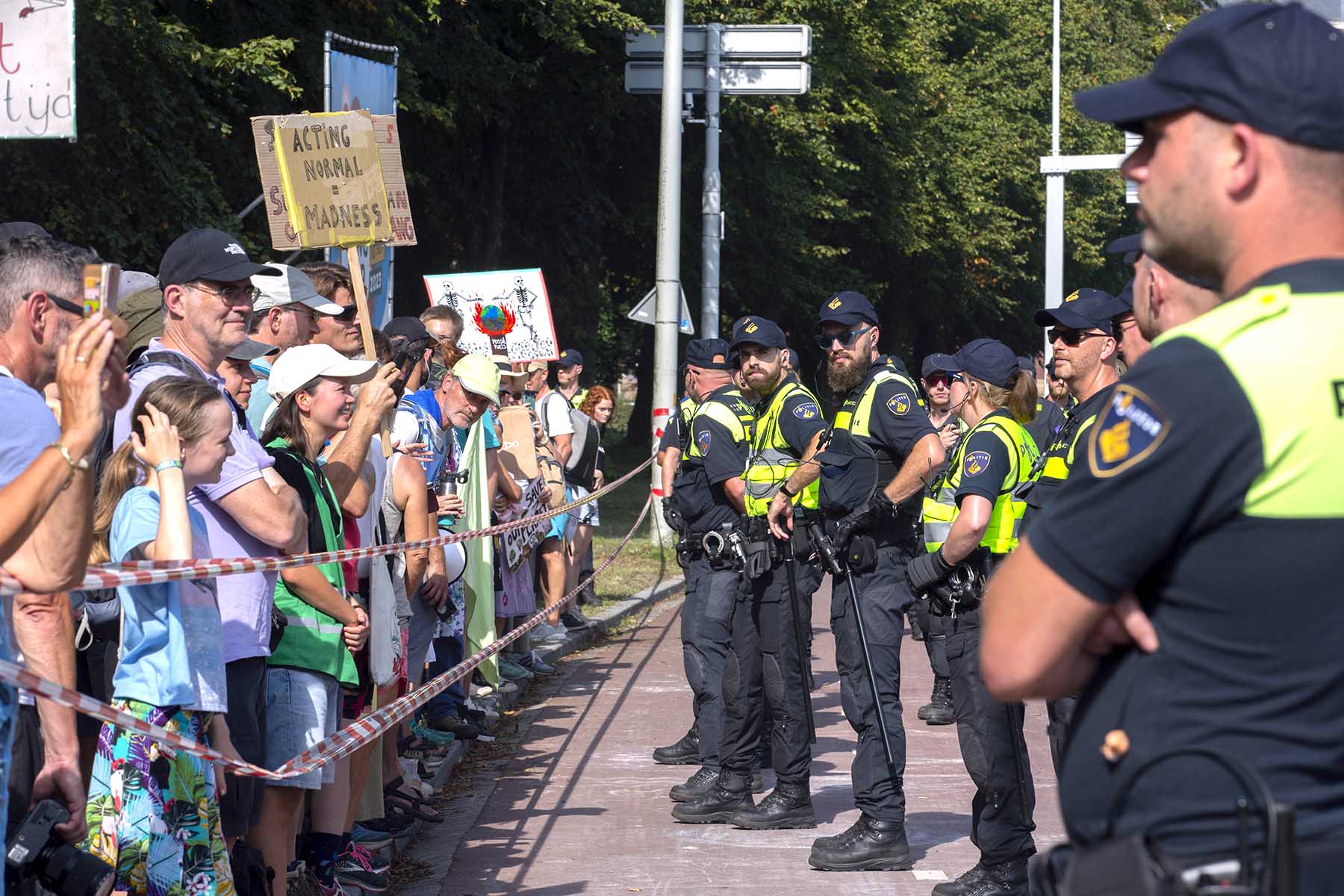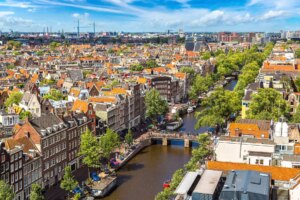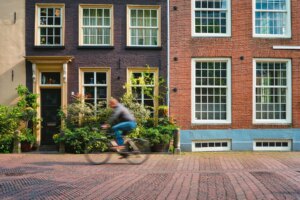Whether you’re living in the Netherlands or just visiting, learning some fun facts about the country will help you get to know it better; not to mention impress your friends at your next trivia night. So prepare to put your Dutch knowledge to the test as we share 30 facts about the Netherlands that might just surprise you.
- 1. Don’t call the Netherlands ‘Holland’
- 2. The Netherlands has the highest population density in Europe
- 3. The Netherlands is the lowest-lying country in Europe
- 4. The Netherlands is the sixth happiest country in the world
- 5. The Dutch are the healthiest in the world when it comes to diet
- 6. The Dutch are the most physically active European country
- 7. The Dutch invented the first stock market in the world
- 8. There are more bicycles in the Netherlands than people
- 9. The Netherlands has the highest English proficiency in the world
- 10. One-fifth of the population in the Netherlands is foreign-born
- 11. The Netherlands has one official language
- 12. The Dutch are indeed the tallest nation in the world
- 13. There are over 1,000 windmills in the Netherlands
- 14. The Dutch produce around six million souvenir clogs each year
- 15. Tulips aren’t actually native to the Netherlands
- 16. Almost 80% of the world’s flower bulbs come from the Netherlands
- 17. The Netherlands is the world’s second-biggest beer exporter
- 18. Gin was invented by the Dutch and introduced to the Brits
- 19. Orange is the national color of the Netherlands
- 20. The Dutch turned carrots orange
- 21. Drugs aren’t as easily available as you might think
- 22. The Netherlands was the first country in the world to legalize same-sex marriage
- 23. One in eight babies are born at home in the Netherlands
- 24. The Dutch government plans to ban new gas and diesel cars by 2030
- 25. Amsterdam Airport Schiphol offers the most direct flights in Europe
- 26. The Dutch eat more licorice than any other nation in the world
- 27. CDs, DVDs, and Blu-Ray were all invented in the Netherlands
- 28. Queen Beatrix gave the throne to her son Prince Willem-Alexander in 2013
- 29. King’s Day used to be called Queen’s Day
- 30. The Dutch king once flew for KLM
1. Don’t call the Netherlands ‘Holland’
People are often confused about whether to refer to ‘the Netherlands’ or ‘Holland’ when talking about the low-lying country. To clarify, the Netherlands consists of 12 provinces, and Holland is an area that is made up of two provinces; North Holland (Noord-Holland) and South Holland (Zuid-Holland). Historically, Holland was the area that contributed the most to the Dutch kingdom’s economy and wealth; thus becoming a common name to indicate the entire country, although used incorrectly. That was until January 2020 when the Dutch government officially dropped its country’s nickname, Holland, referring to itself as the Netherlands, in an effort to rebrand its international image. Glad we cleared that up!
2. The Netherlands has the highest population density in Europe
Based on United Nations data, the total population of the Netherlands was 17,140,098 in August 2020. The total land area of the country is 33,720 square kilometers, giving it a population density of 508 people per square kilometer. This makes the Netherlands the second-most densely populated country in the EU (only behind Malta) and one of the most densely populated countries in the world. Interestingly, around 92.5% of the population lives in urban areas. And more than 40% of the total population of the country lives in the Randstad; an agglomeration of the cities of Amsterdam, Rotterdam, The Hague, and Utrecht.
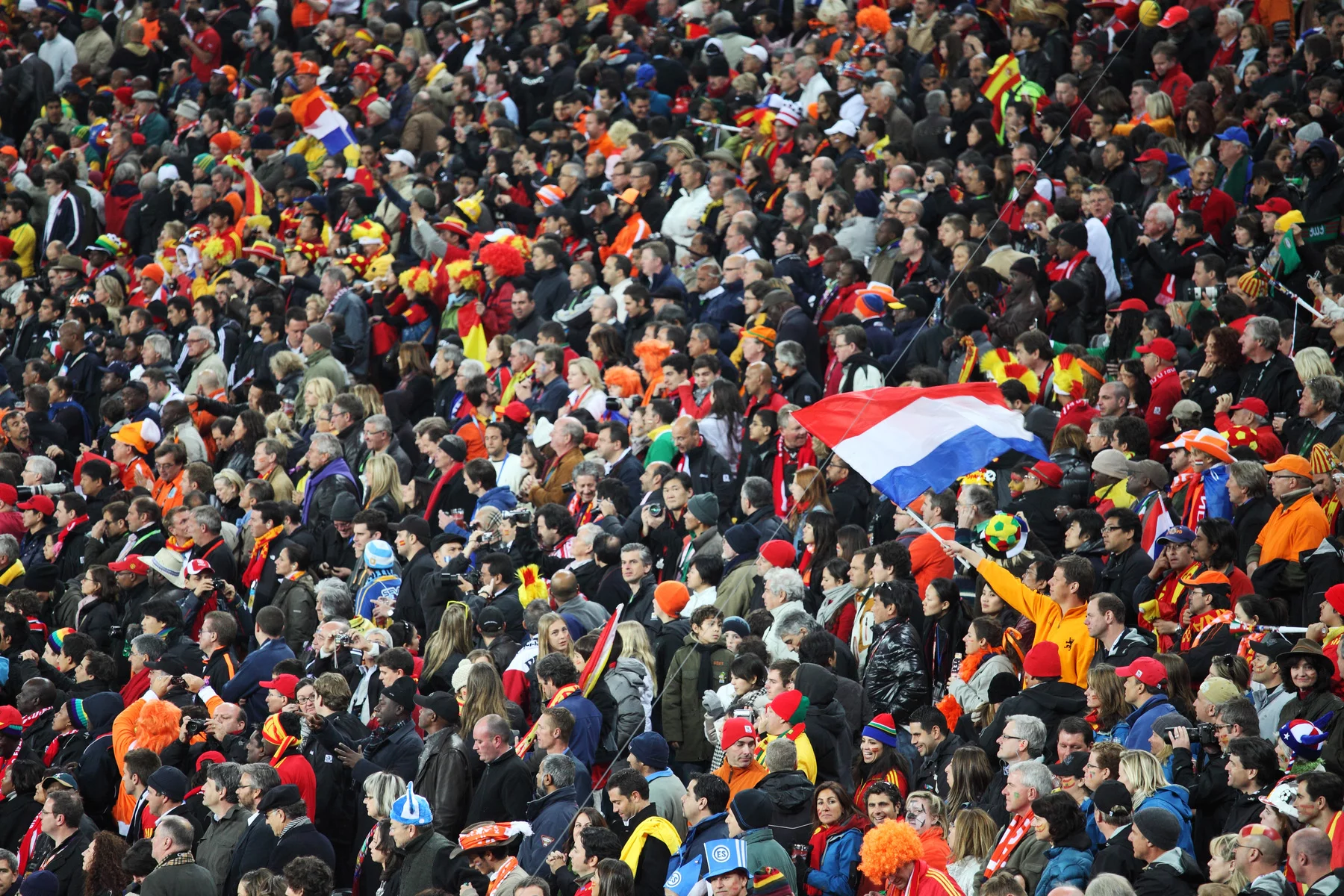
3. The Netherlands is the lowest-lying country in Europe
Okay, so this fact might not be entirely surprising, given that the world Netherlands literally translates as ‘lower countries’. Nevertheless, it’s mind-blowing to think that over a quarter (26%) of the Netherlands is actually sitting below sea level. What’s more, some 60% of the population is currently living 5m below sea level. The highest point in the country is a hill in Vaalserberg in South Limburg which sits at 322.5m above sea level. The lowest point, meanwhile, is Zuidplaspolder, which is 7m below sea level. Amsterdam’s Schiphol Airport is also 5m below sea level. Luckily for people living in the Netherlands, the Dutch are pretty savvy when it comes to pumping the land dry using an intricate system of windmills, pumping stations, polders, and dikes. Phew!
4. The Netherlands is the sixth happiest country in the world
The Netherlands ranks as the world’s sixth happiest country, according to the 2020 World Happiness Report. The annual study ranks 156 countries, taking into account factors such as healthy life expectancy, freedom, trust, corruption, and social support. And it appears that the jovial Dutch have plenty to be thankful for, scoring high levels of social and institutional trust, as well as social connection. Interestingly, the country also ranks significantly higher than its neighbors, Germany (17th) and Belgium (20th). According to the report, only Finland, Denmark, Switzerland, Iceland, and Norway are happier nations. Now there’s something to smile about!
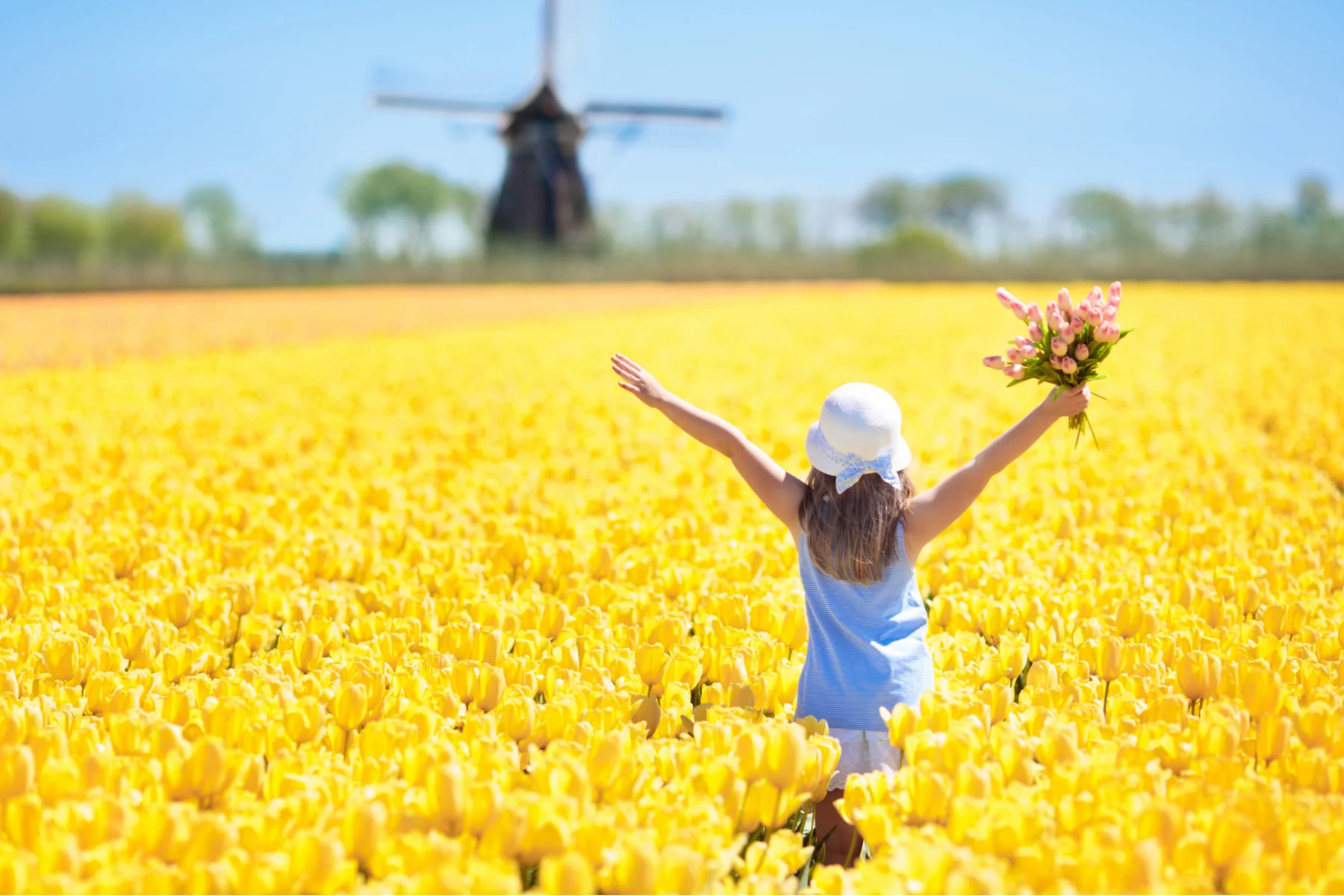
5. The Dutch are the healthiest in the world when it comes to diet
As well as being one of the happiest nations on the planet, the Dutch are also one of the healthiest when it comes to diet and nutrition. In the Oxfam Food Index of 125 countries, they rank number one for having the most plentiful, nutritious, healthy, and affordable food; above France and Switzerland. Despite the nation’s cravings for some pretty naughty Dutch snack foods, it seems that residents are actually pretty good when it comes to eating their greens. And that makes sense, given that the Netherlands is the second-largest exporter of vegetables in the world. That said, the occasional plate of bitterballen won’t do too much damage, right?
6. The Dutch are the most physically active European country
As well as scoring major points for health and happiness, the Dutch are also the most physically active population in Europe. According to the Euro Barometer, around 56% of Dutch people play sports on a weekly basis, compared to the European average of 40%. This is largely owing to the fantastic infrastructure throughout the country, which allows people to walk and cycle for work or fun. The famously flat country boasts 20,000km of fietspaden (bicycle paths) making cycling in the Netherlands an extremely pleasant activity. And with so many beautiful Dutch cycling routes to choose from, who can blame them?
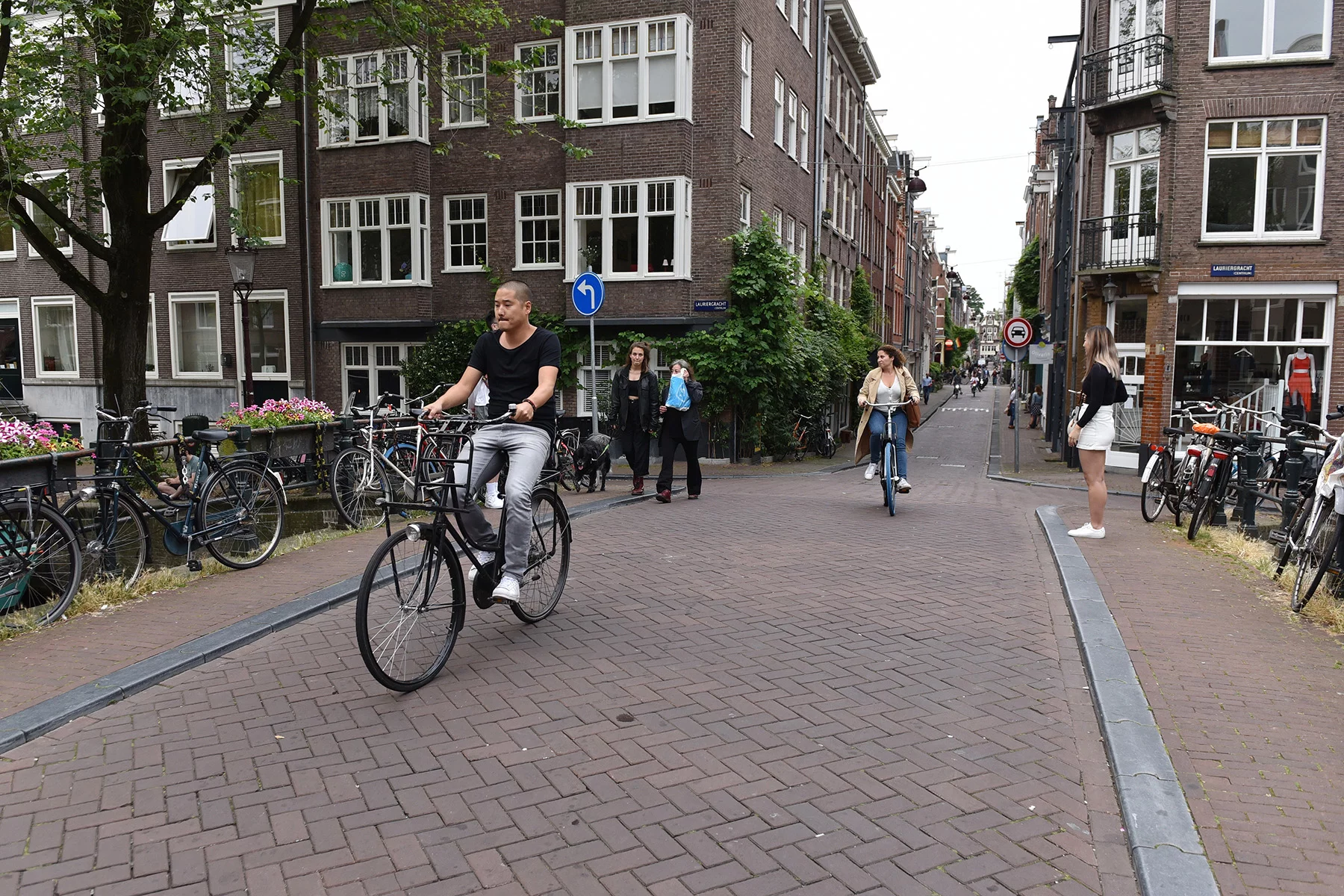
7. The Dutch invented the first stock market in the world
Now, here’s a rather surprising fact about the Netherlands. Amazingly, the first stock market in the world was invented by Dutch legislators and businessmen back in 1602. This was done as a means of funding the Dutch East India Company and its long trade-based voyages from the Netherlands. The Amsterdam Stock Exchange was also created in the same year, and many consider this to be the oldest modern exchange in the world. The Dutch were also the first to develop Fairtrade certification, launching the Max Havelaar certificate in the 1980s. Nice one, Netherlands!
8. There are more bicycles in the Netherlands than people
Yes, it’s true. There are over 22 million bicycles in the country and only 17 million residents. This includes the clever (if not so elegant) bakfiets which combine a bike with a large container at the front to transport children, pets, and shopping. Some sources claim that the Dutch cycle an average distance of 2.9km per day and use bicycles for more than a quarter of all trips. This compares to just 2% in the United Kingdom. Others suggest that on average, a Dutch person cycles 1,000km a year in about 250 to 300 trips. The downside of having so many bikes is that theft is very high; particularly in Amsterdam where it is the most common crime. Over 100,000 bikes are reported stolen each year in the Netherlands, so be careful where you park your wheels.
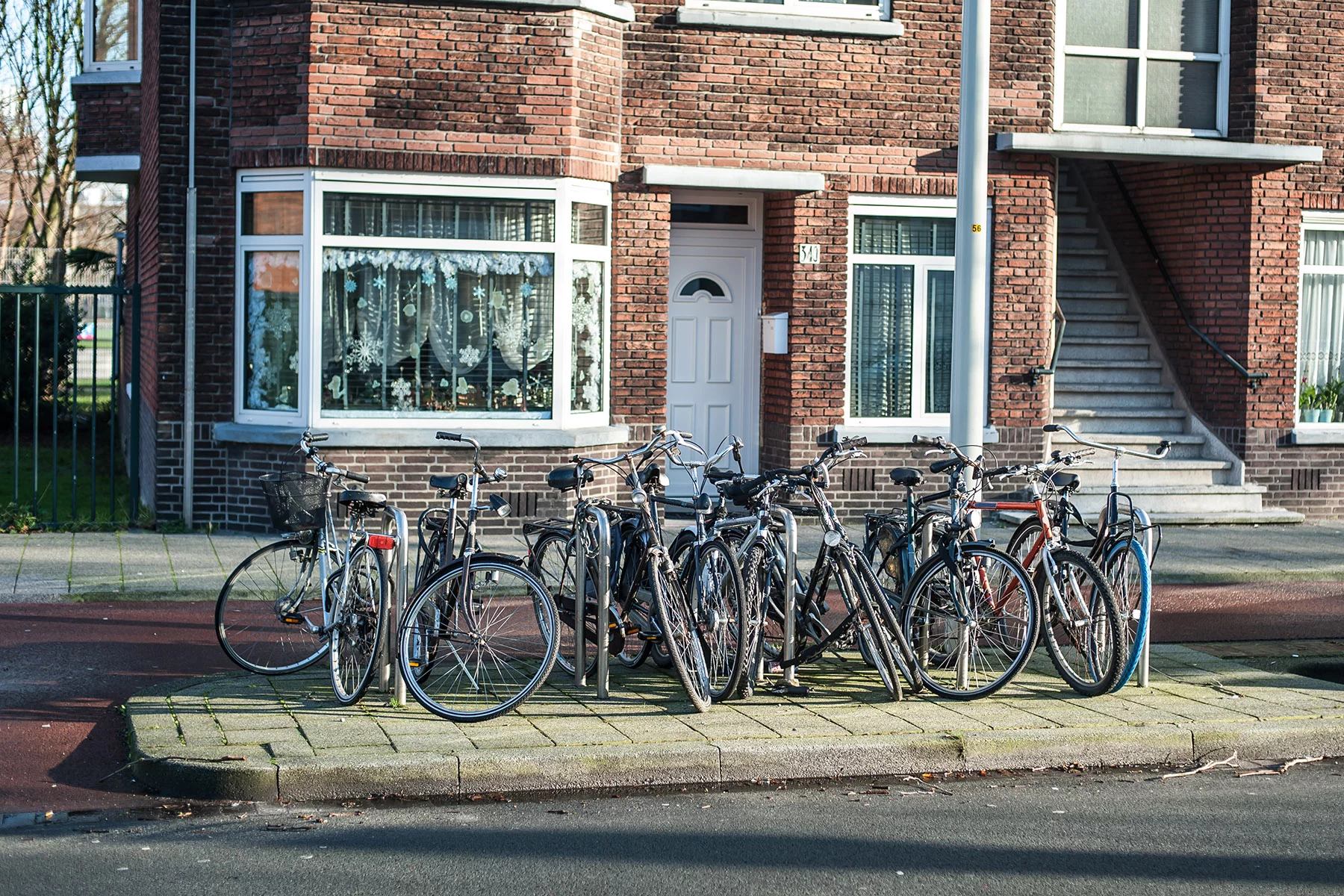
9. The Netherlands has the highest English proficiency in the world
Are you moving to the Netherlands but can’t speak a word of Dutch? Then boy are you in luck because this clever nation is better at speaking English than any other non-native country. According to the EF English Proficiency Index, the Dutch are top of the class in English, narrowly beating Denmark and Sweden. Between 90 and 93% of the population can speak English as a second language. As if that wasn’t impressive enough, around 94% of Dutch people can speak two languages, which is well above the EU average of 54%. Still, there’s no harm in brushing up on your Dutch skills in the meantime.
10. One-fifth of the population in the Netherlands is foreign-born
If you enjoy living in a multicultural society, then you’ll feel right at home in the Netherlands. More than three million of the country’s residents come from a non-Dutch background, accounting for roughly one in five people. Furthermore, more than half of the country’s immigrants (1.7 million people) are of non-Western origin. They mainly come from Türkiye, Surinam, Morocco, Antilles, and Aruba. This multicultural mix is particularly felt in Amsterdam and Rotterdam, where almost one in three people are of non-Western origin. Thanks to this cultural diversity, you will discover many delicious ethnic foods in major Dutch cities.
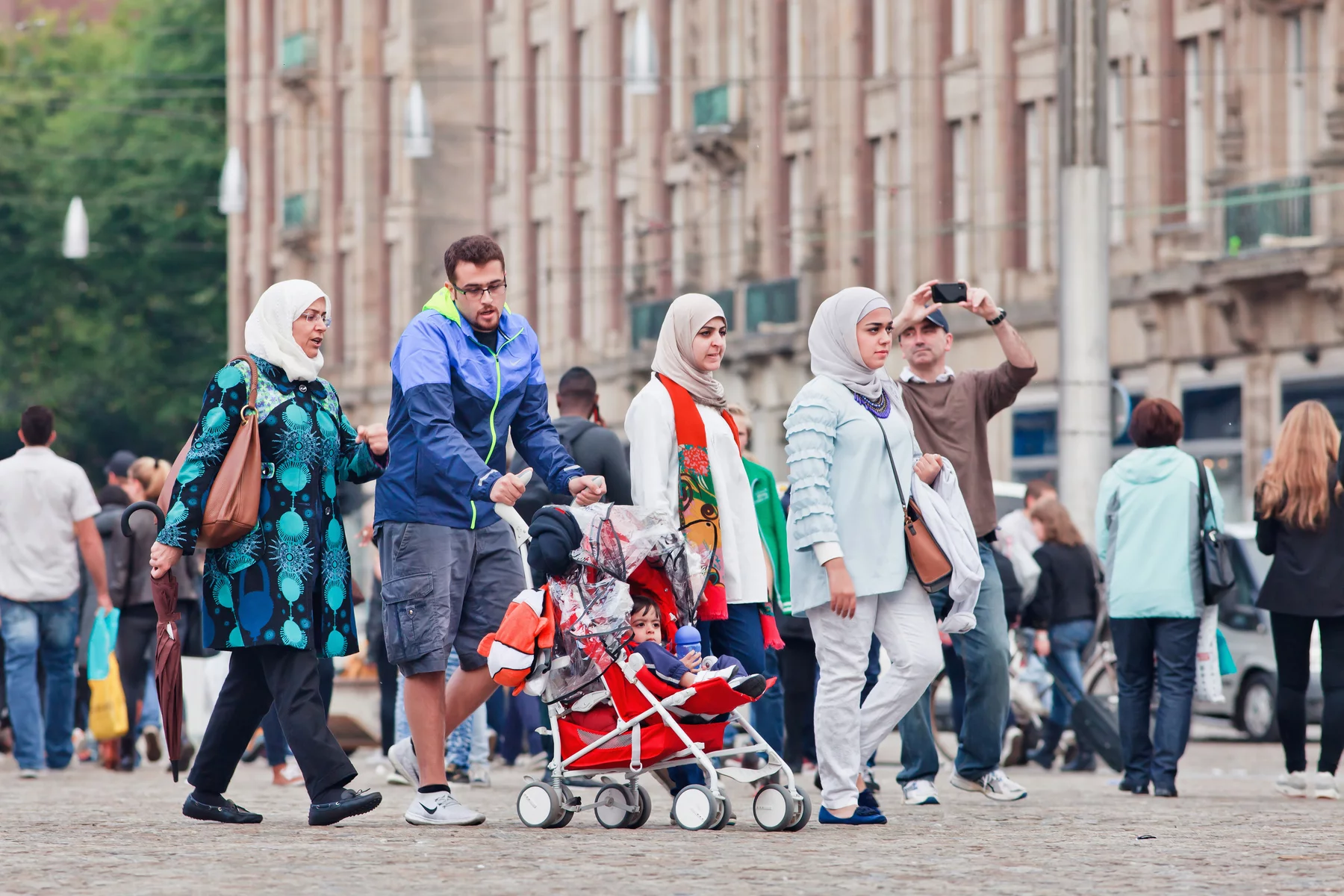
11. The Netherlands has one official language
Dutch is the sole official language of the Netherlands, although English is also spoken by the majority of the population. It is estimated that less than 400,000 people speak Frisian, which is also an official language in the northern province of Friesland. That means, ironically, far more Dutch people speak English than Frisian. Limburgish, Dutch Low Saxon, and Gronings are also minority languages, although these are often only heard across the Dutch-German border where they belong to a common Dutch-German dialect continuum. Interestingly, the Netherlands also has its own Dutch Sign Language, Nederlandse Gebarentaal (NGT), which is used by around 15,000 people.
12. The Dutch are indeed the tallest nation in the world
Yes, the rumors are true – the Dutch are the world’s tallest people, with an average height of 175.62cm. Dutch men are also the tallest globally, standing on average at 182.53cm. This is good news if you are single and seeking a tall, (not so) dark, and handsome man in the Netherlands! Some researchers say that environmental factors such as low social inequality, universal healthcare, and heavy dairy consumption are all contributing factors. So if you want to grow a few inches taller, it might be worth hitting the Dutch cheese markets!
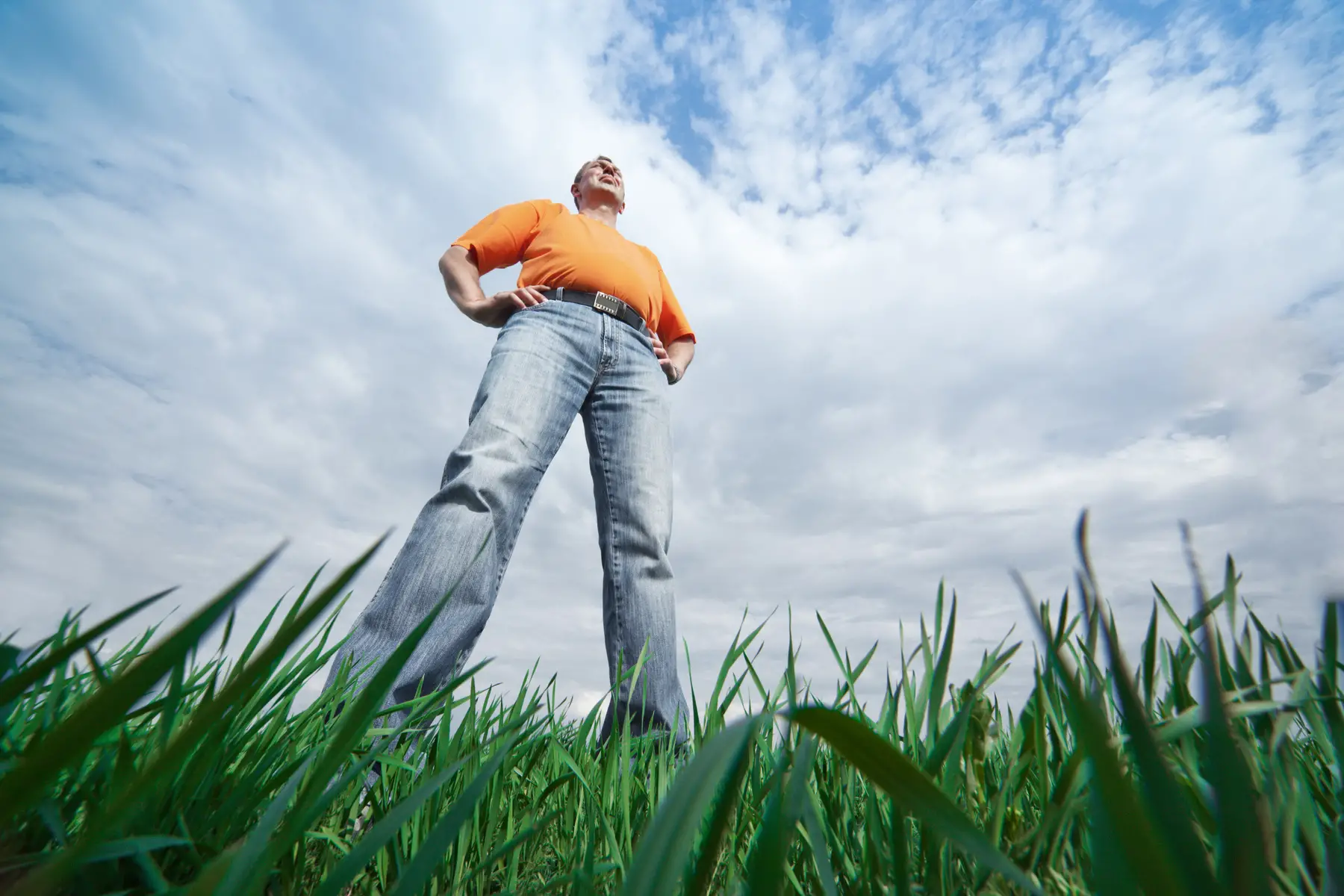
13. There are over 1,000 windmills in the Netherlands
There are over 1,000 windmills in the Netherlands, many of which are open to visitors throughout the year. Some windmills, such as the 19 at the Kinderdijk UNESCO World Heritage Site, are still being used to drain water from the land. Others, such as Molen de Valk in Leiden, meanwhile, are used to grind grain into flour. Like many windmills in the Netherlands, this also includes a museum and invites guests to peek inside and learn about its history. Only a few windmills still operate commercially in the country, but they are still well worth a visit if you get the chance.
14. The Dutch produce around six million souvenir clogs each year
You won’t find many things more iconically Dutch than a pair of wooden clogs. The Dutch have been wearing these hard shoes (or klompen) since medieval times to protect their feet while doing hard labor. These clunky shoes were ideal as they are sturdy, waterproof, and easy to clean. Although you will still sometimes see them in the fields in rural areas of the Netherlands, nowadays they are largely sold as tourist souvenirs. And with a whopping six million of them being produced each year, you certainly won’t have any trouble finding your size – that’s if you’re bold enough to wear them!
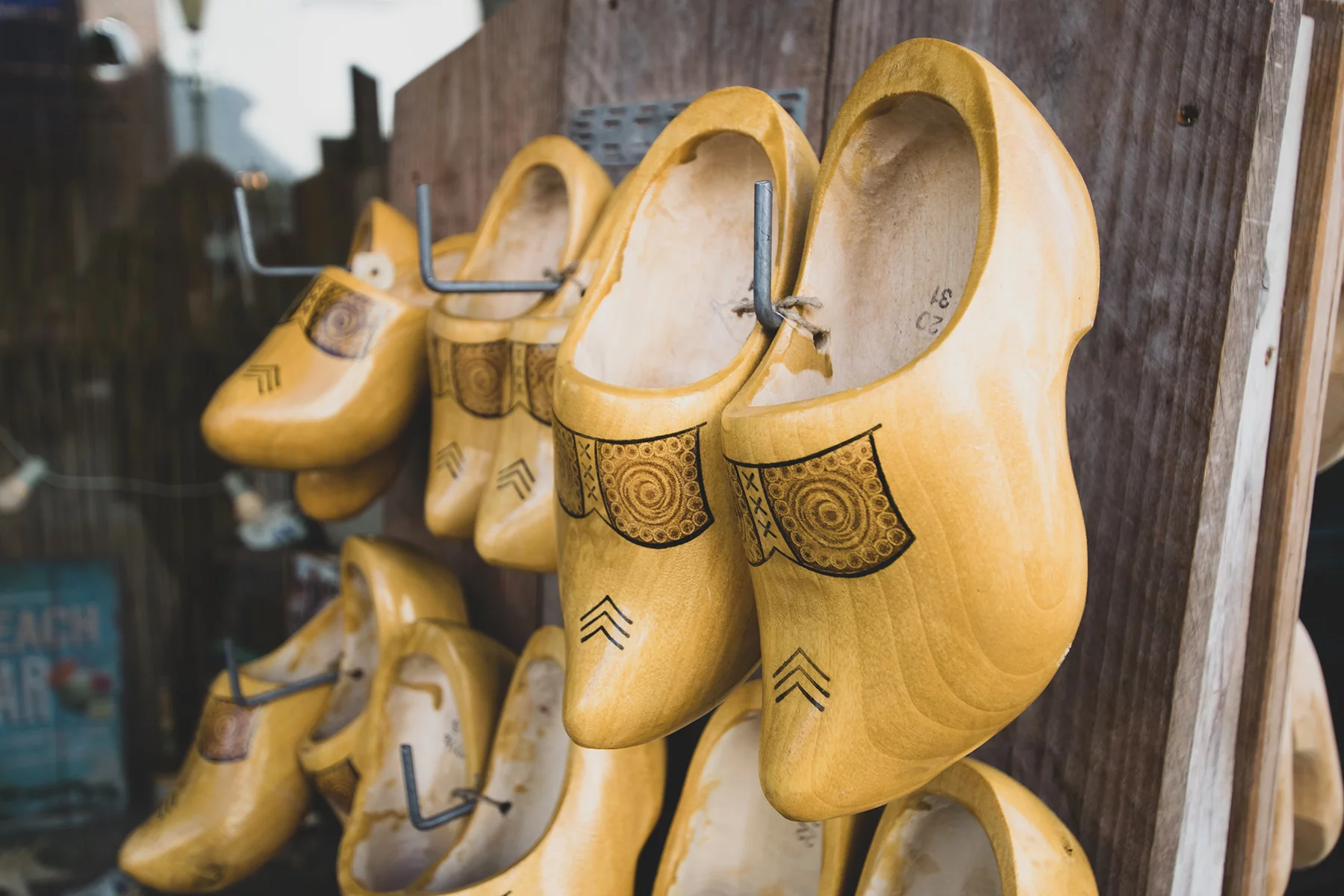
15. Tulips aren’t actually native to the Netherlands
Now, this fact might surprise you because believe it or not, the Netherlands’ iconic flower, the tulip, did not originally grow on Dutch soil. The colorful tulp was actually imported from Türkiye in the 16th century, yet it has played a vital role in Dutch culture ever since. In the 1630s, tulip mania gripped the Netherlands, and prices rose until bulbs cost as much as houses! This attracted many farmers to switch to cultivating the flower, before the industry suddenly collapsed in 1637, leaving many people in poverty. It wasn’t until the last winter of World War II that the starving Dutch discovered tulip bulbs as a food source. Now, every third Saturday in January, the Dutch celebrate National Tulip Day – the official start of the tulip season – with free flower picking and flower festivals.
16. Almost 80% of the world’s flower bulbs come from the Netherlands
Perhaps unsurprisingly, the Netherlands is the world’s leading exporter of flowers, most of which are tulips. Around two billion tulips leave the country each year and travel to different destinations around the globe. In most cases, the flowers are sold at the famous FloraHolland auctions in Naaldwijk, Rijnsburg, and Aalsmeer, the world’s largest trading center for plants and flowers. Thousands of visitors come to the auction each year to discover the massive logistics operation required to transport the blooms around the globe. Others, meanwhile, flock to one of the most famous places to visit in the Netherlands, the beautiful Keukenhof Gardens, to marvel at the spectacular sea of tulips.
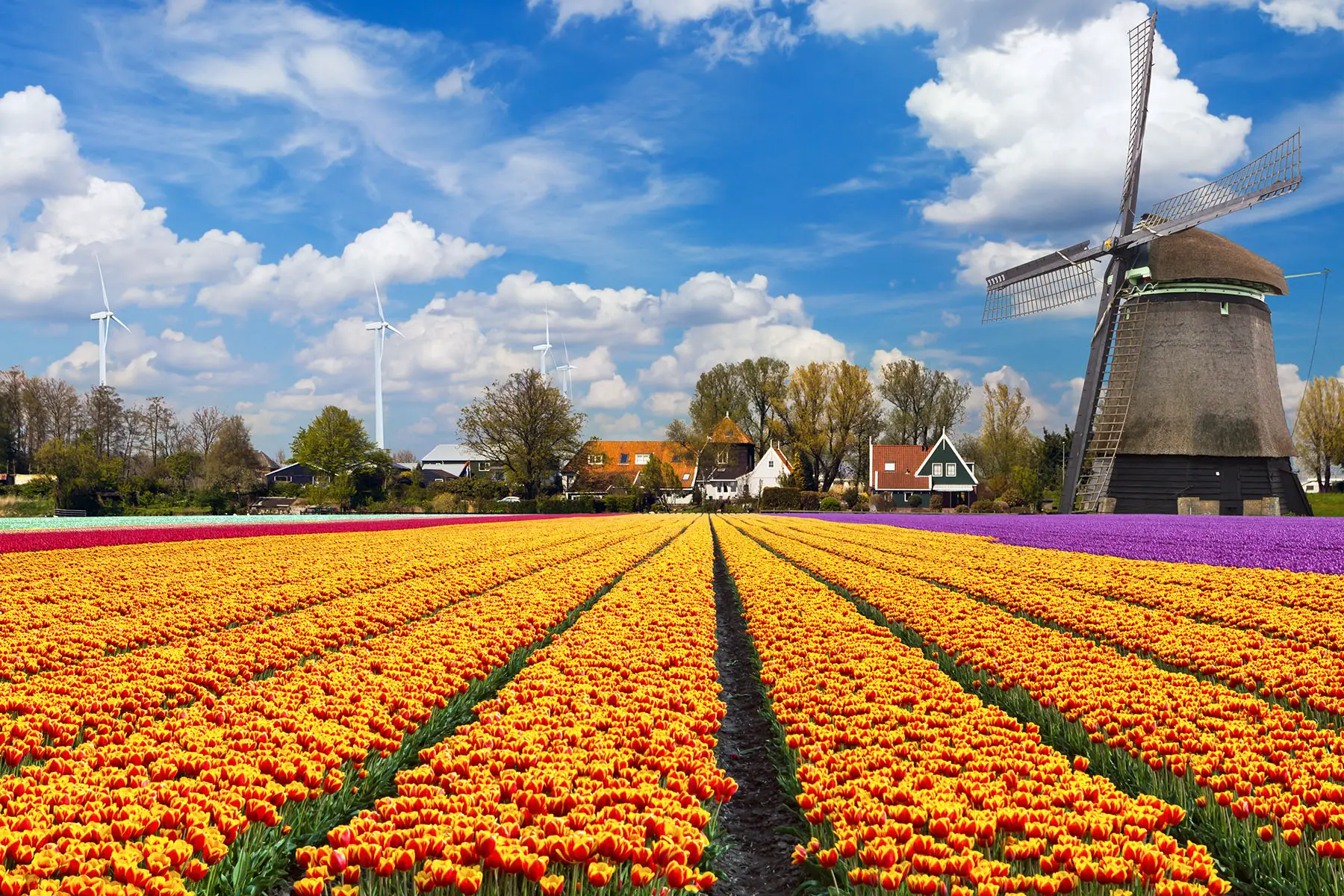
17. The Netherlands is the world’s second-biggest beer exporter
Flowers aren’t the only fun thing to come out of the Netherlands – there’s beer too! The Netherlands is famous for many Dutch brews, which include many well-known brands such as Heineken, Grolsch, and Amstel. It makes sense then that the country is the second-biggest beer exporter in the world, after Mexico. Dutch brewers exported US$2.1 billion worth of beer in 2019, with almost 40% going to US markets. The number of beer breweries in the country has also grown exponentially in recent years; from roughly 180 in 2012 to nearly 700 in 2018. Needless to say, you won’t be going thirsty in this beer-loving country.
18. Gin was invented by the Dutch and introduced to the Brits
The Brits are known to love a refreshing gin and tonic on occasion, and they have the Dutch to thank for that. Gin (or jenever) was actually invented in the Netherlands in the 16th century and reportedly became popular in Great Britain after William of Orange (King William III) occupied the English, Scottish, and Irish thrones with his wife Mary. The term ‘Dutch courage’ allegedly derives from when gin was used by the Brits and the Dutch to gain bravery by getting intoxicated during the Thirty Years’ War (1618–1648). Fancy a shot, anyone?
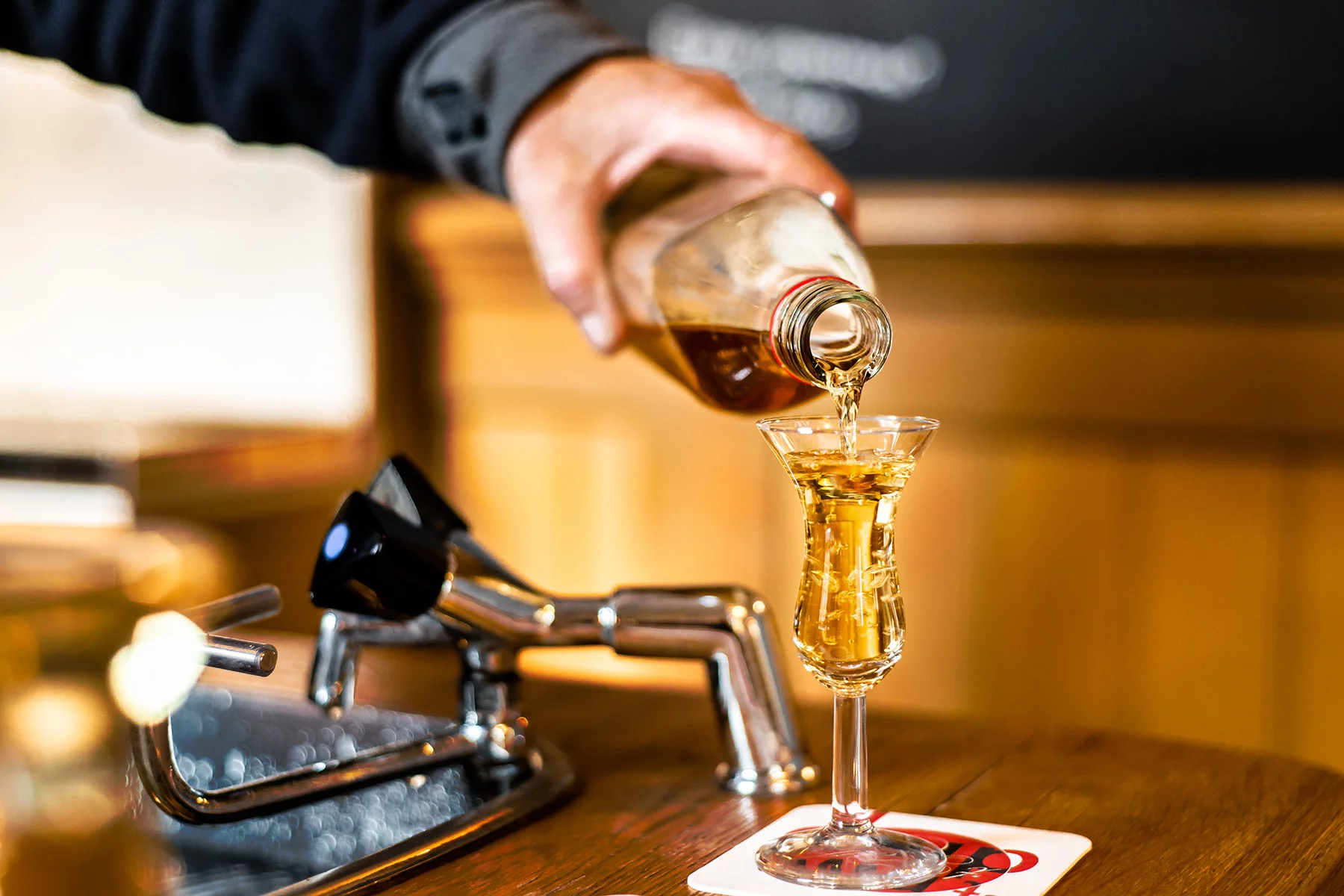
19. Orange is the national color of the Netherlands
Despite the Dutch flag being red, white, and blue, orange is actually the national color. This is because the monarchy is from the House of Orange, and until becoming king, Willem-Alexander was the Prince of Orange. To honor the country’s heritage, the Dutch wear orange on days of national pride, and their sports teams wear bright orange uniforms, too. On Koningsdag (King’s Day), on 27 April, Dutch people also dress in orange and celebrate their country with outdoor parties, picnics, and parades.
20. The Dutch turned carrots orange
Speaking of orange… another surprising fact about the Netherlands involves the humble carrot. For centuries, almost all carrots were yellow, white, or purple. However, in the 17th century, most of these crunchy vegetables turned orange. Amazingly, the transformation was purely political. Dutch growers cultivated them as a tribute to William of Orange who led the struggle for Dutch independence. However, the striking color stuck, and the original species were eventually phased out. Now, how’s that for a juicy fact!

21. Drugs aren’t as easily available as you might think
Yes, you read that right. While it’s true that coffee shops in the Netherlands are permitted to sell cannabis (hash and marijuana), there are strict toleration criteria they must adhere to. As of 2012, they are not permitted to sell hard drugs, sell cannabis to minors, advertise drugs, or sell large quantities (over 5g of cannabis) in a single transaction.
They are also not permitted to grow more than five plants for personal consumption. Municipalities can determine whether to allow coffee shops to operate within their boundaries and if so, how many. They can also impose additional rules if they wish. See? Not so chill after all.
22. The Netherlands was the first country in the world to legalize same-sex marriage
The Netherlands is known to be a progressive and liberal nation, and this is partly due to the fact that the Netherlands was the first country to legalize same-sex marriage. Since 2001, it has been possible for two men or two women to marry in the Netherlands. Since then, over 15,000 same-sex couples have tied the knot. The number of same-sex marriages also saw a peak in 2018, when over 1,500 couples got hitched. Today, same-sex marriage is possible in 28 countries besides the Netherlands. Yay for love!
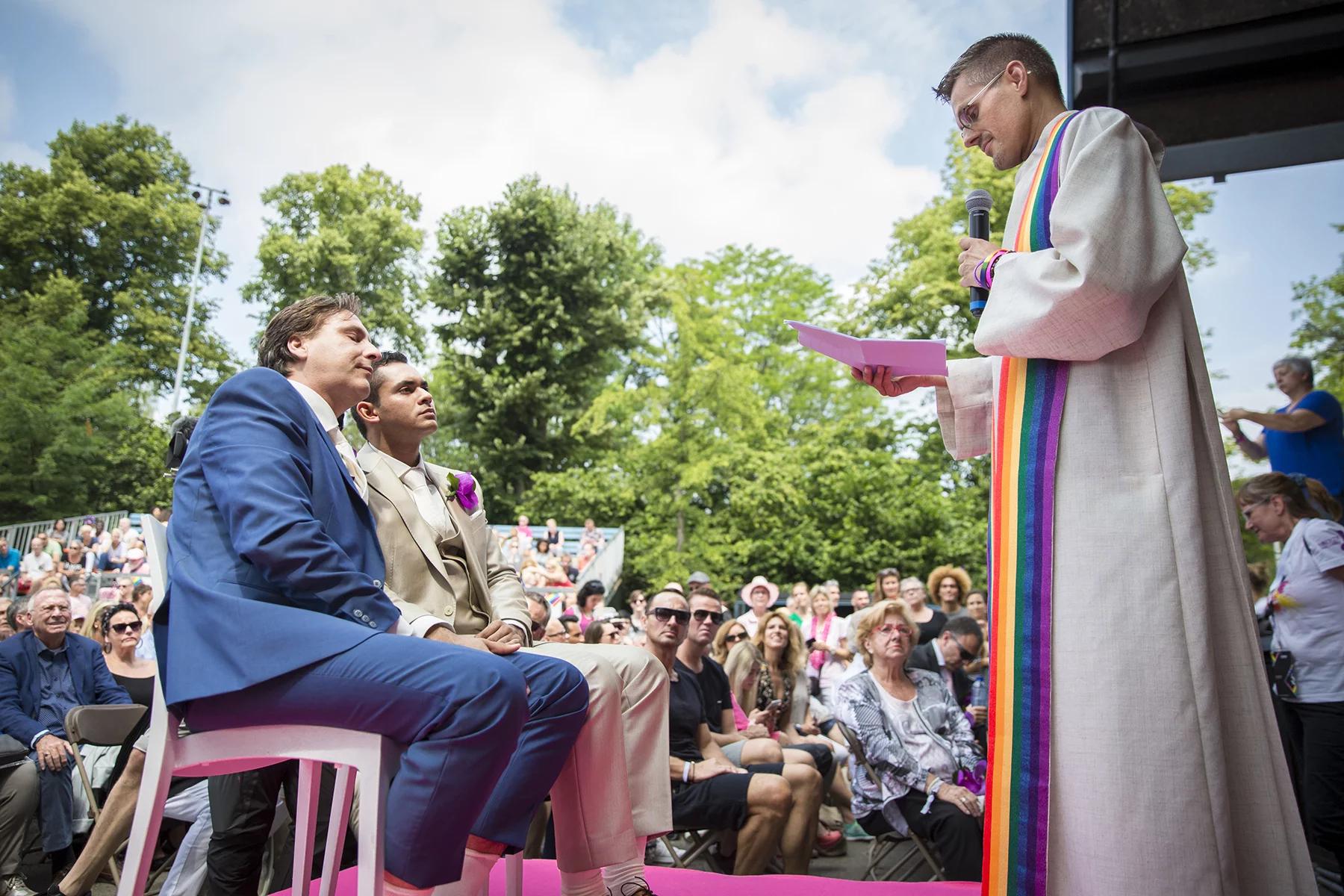
23. One in eight babies are born at home in the Netherlands
If you are planning on having a baby in the Netherlands, then you might be surprised to learn that home births are still fairly common in the country. In fact, as many as one in eight babies are born at home. This is one of the highest rates of home births in the developed world. That said, they are becoming less common than they were in the 1990s. Back then, 35% of women chose to give birth at home, compared to just 13% in 2017. This decline is thought to be connected with an increase in the demand for pain relief that can’t be administered at home. Despite these concerns, though, home births are still covered by Dutch health insurance.
24. The Dutch government plans to ban new gas and diesel cars by 2030
As part of the Dutch government’s national climate agreement to reduce emissions by 49% by 2030, it plans to make all new cars emission-free by then. This means virtually banning gas- and diesel-powered cars in favor of battery-powered vehicles. As a result of favorable taxes on electric vehicles, the sales volumes of Tesla cars have risen significantly in the Netherlands; from 8,600 in 2018 to 18,500 in 2019. Better start saving up for that dream car, people!
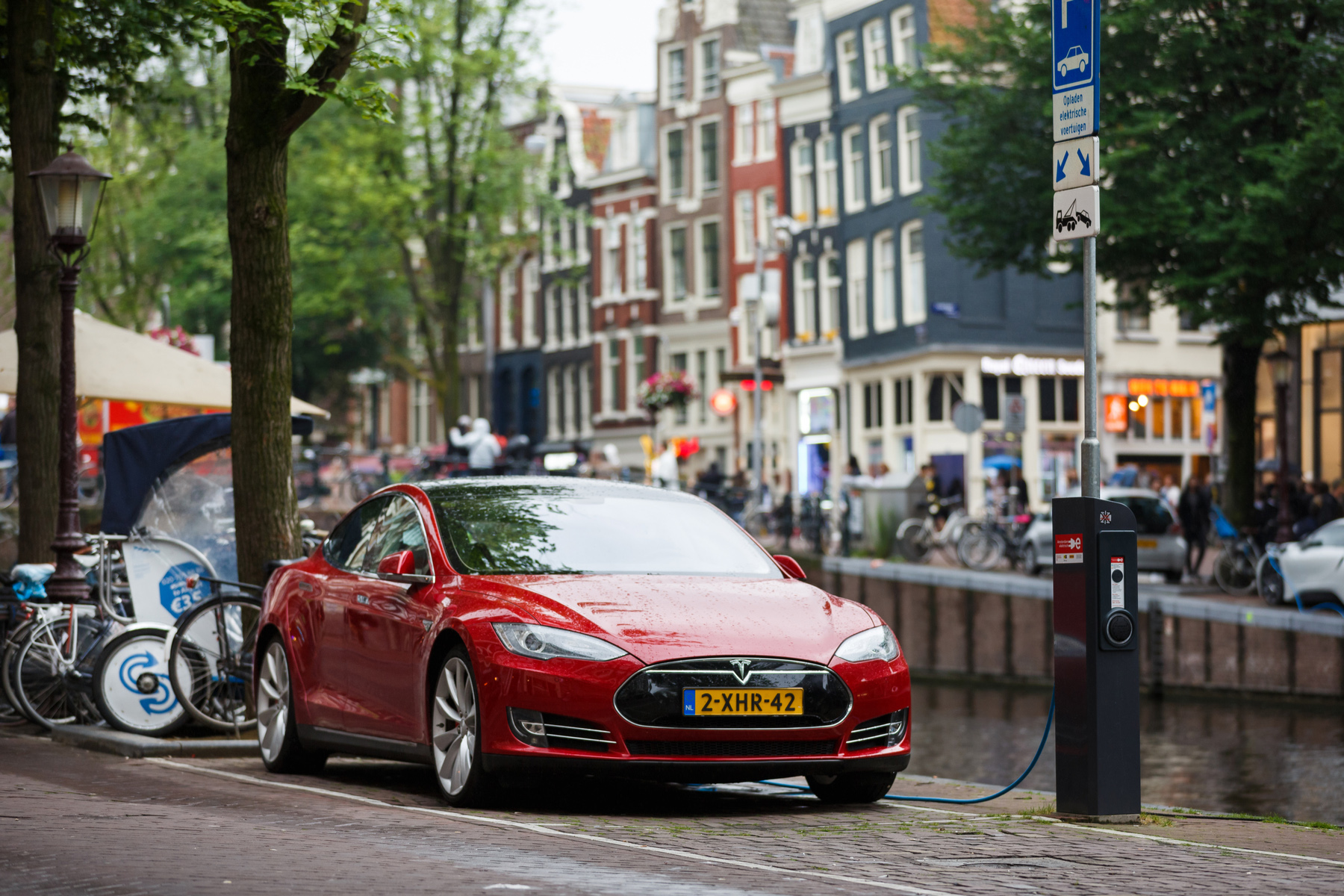
25. Amsterdam Airport Schiphol offers the most direct flights in Europe
With at least 4,861 direct flights each week, Amsterdam Airport Schiphol offers the greatest direct connectivity of all European airports. A total of 104 airlines fly to 97 countries and 332 direct destinations from Schiphol. This is great news for expats living in the Netherlands who want to visit their home from time to time. The airport is 100% government-owned and handles around 60 million passengers per year. Other Dutch airports can be found in Maastricht, Rotterdam, Groningen, and Eindhoven.
26. The Dutch eat more licorice than any other nation in the world
If you like licorice, then you’ll literally feel like a kid in a sweetshop in the Netherlands. This drop-loving nation can’t get enough of the stuff and consume around 32 million kilos of it every year! That works out at more than 2,000g per person; the highest per capita consumption of licorice in the world. Despite being an acquired taste, there is certainly no shortage of the sweet black treat in Dutch supermarkets and candy shops. And because it is believed to have anti-inflammatory and other medicinal properties, many people also use it to treat various ailments. That said, excessive consumption is toxic to the liver and cardiovascular system, and may cause high blood pressure. So go easy on the drop!
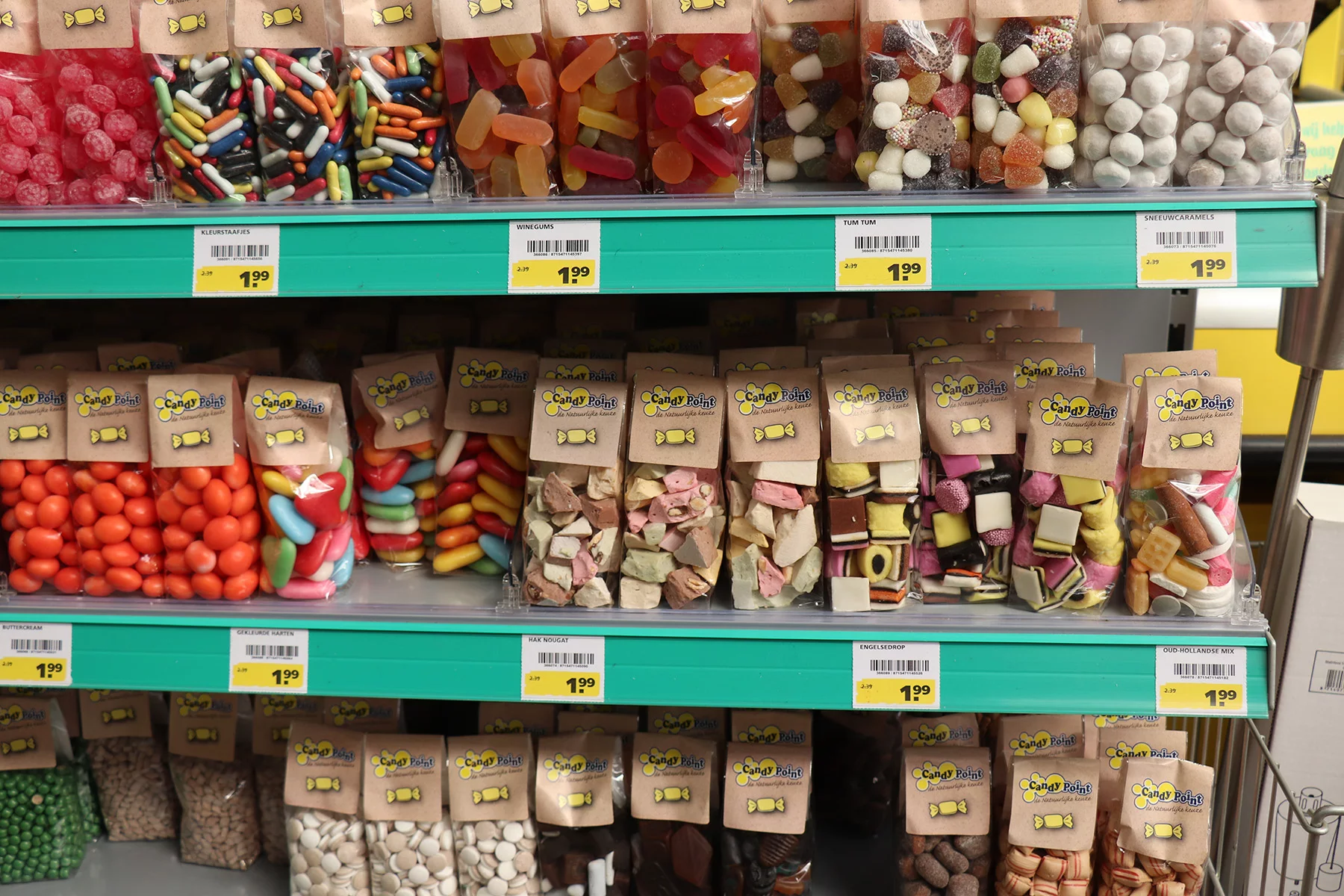
27. CDs, DVDs, and Blu-Ray were all invented in the Netherlands
Believe it or not, physical media as we know it today was actually invented by the Dutch electronics giant Philips. This began with the creation of the cassette in 1963. Nearly twenty years later, the company worked with Sony to replace the cassette with the CD. And when it was time to replace the VHS in 1997, Philips created the DVD. This later evolved into the Blu-ray disk. The company also developed and popularized many home electronics in Europe, such as TVs and blenders.
28. Queen Beatrix gave the throne to her son Prince Willem-Alexander in 2013
Queen Beatrix is certainly a generous woman. After 33 years of ruling the Netherlands, she abdicated the throne in 2013 and handed it to her son Prince Willem-Alexander. The 75-year-old monarch signed the instrument of abdication in Amsterdam, announcing that her son was ready to reign and that it was time for the throne to be held by a new generation. Huge crowds of orange-clad partygoers took to the streets to pay tribute to the queen and her honorable gesture. Her abdication made Willem-Alexander the first king in the Netherlands since 1890. Until then, Queen Wilhelmina, Queen Juliana, and Queen Beatrix had reigned the kingdom.
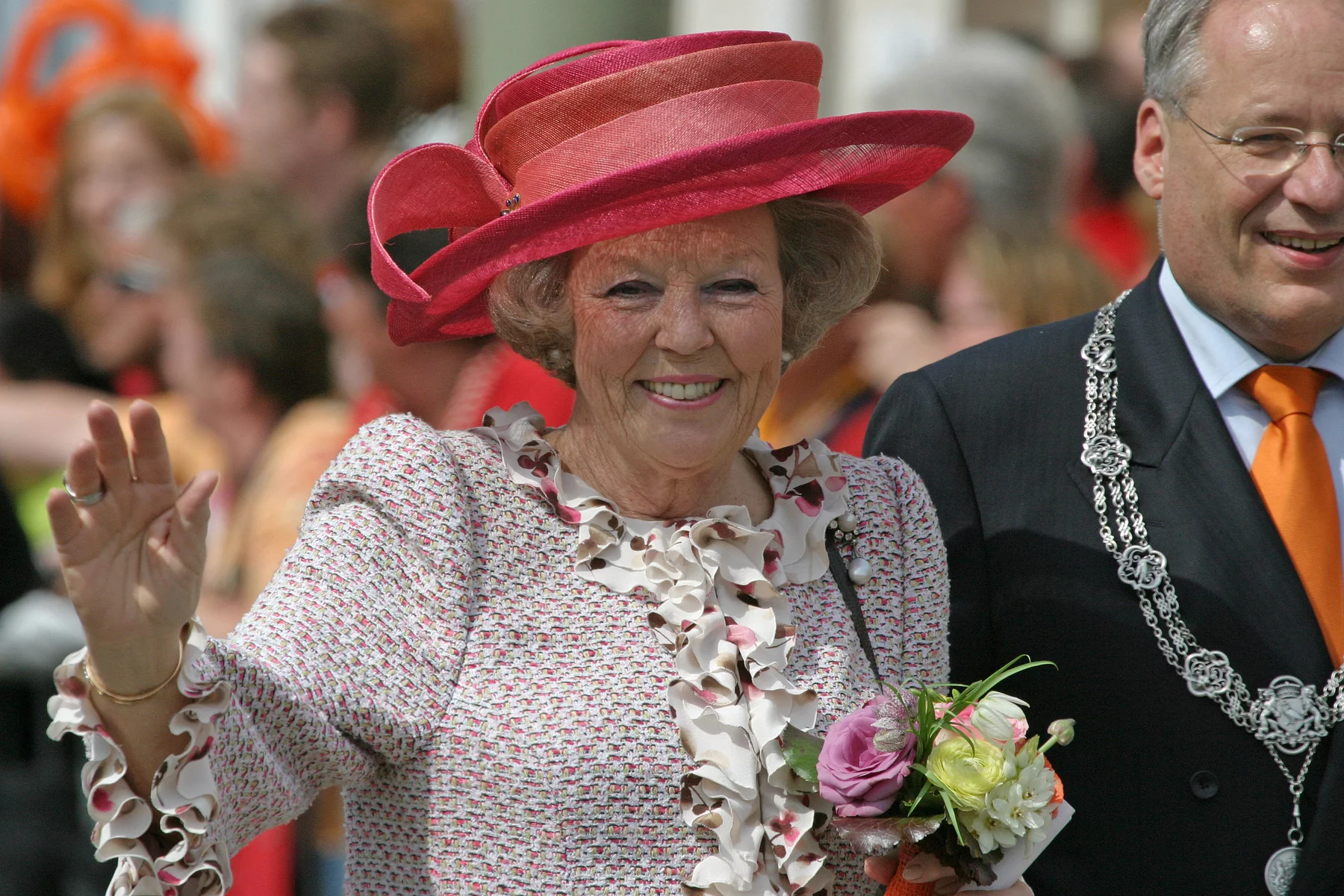
29. King’s Day used to be called Queen’s Day
Another fun fact about the Netherlands centers around the country’s national holiday, King’s Day (or Koningsdag). Prior to Willem-Alexander’s accession to the throne in 2013, this was actually called Queen’s Day (Koninginnedag). However, unlike King’s Day, this wasn’t actually held on Queen Beatrix’s birthday, which falls on 31 January. Instead, it was held on her mother’s birthday on 30 April. Beatrix decided to keep Queen’s Day on this date to honor her mother. This was much to the delight of the Dutch people, who could celebrate in spring rather than winter, which is known to get rather chilly in the Netherlands.
30. The Dutch king once flew for KLM
Speaking of the king, Willem-Alexander is known to have a passion for flying. But in 2017, he shocked the media by revealing that he had been working as a co-pilot for KLM Royal Dutch Airlines for more than two decades. Alongside his royal duties, the adventurous monarch had been taking to the skies twice a month on short-haul services from Amsterdam Airport Schiphol. In addition to that, he also likes to take control of the Dutch royal aircraft during trips. Now, who said the royals were boring?
Curious to know more about the Netherlands? Discover more interesting facts about the country in our brief introduction to the Netherlands.
